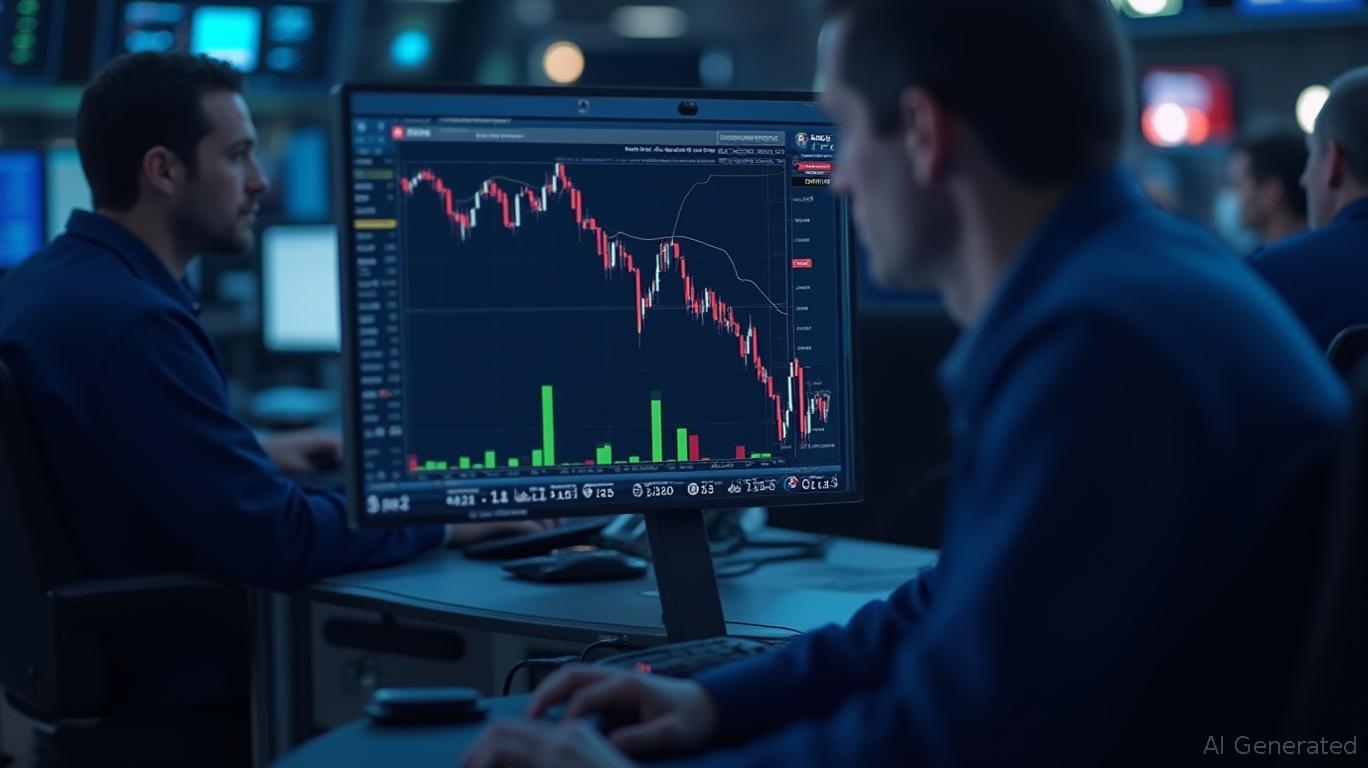Tyler Technologies (TYL) declined 3.30% in the latest session, marking its fourth consecutive daily loss with a cumulative 5.11% drop over this period, reflecting heightened bearish momentum near key technical levels.
Candlestick Theory The recent price action shows a sustained bearish pattern, with four consecutive red candles culminating in a long-bodied down candle on the latest session (open near $577.16, close at $559.90). This indicates strong selling pressure. Key resistance now resides at $593.38 (July 3 high), while immediate support appears at $559.78 (July 10 low). A breach below $559.78 may accelerate declines toward the $534.15–$525.86 zone (April 24–May 9 troughs), where buyers historically emerged.
Moving Average Theory The stock trades below all major moving averages: the 50-day SMA (approximately $575), 100-day SMA (~$580), and 200-day SMA (~$570). This configuration signals entrenched short-term bearishness. Of note, the 50-day SMA crossed below the 100-day SMA recently, reinforcing negative momentum. The persistent trading below these averages suggests continued downside risk unless reclaiming the 50-day SMA.
MACD & KDJ Indicators The MACD (12,26,9) remains in negative territory, with the MACD line below both the signal line and zero, confirming bearish momentum. The KDJ indicator shows the %K line (12.5) below %D (22.3) and the oversold threshold (20), while the %J line lingers near -8. This extreme stochastic reading suggests oversold conditions but lacks a bullish crossover signal. The MACD’s bearish divergence with KDJ’s oversold state creates a tension between momentum exhaustion and prevailing downtrend.
Bollinger Bands Volatility expanded during the selloff, with prices breaking below the lower Bollinger Band ($568 based on 20-day SMA and 2SD). This deviation often precedes mean reversion, though the absence of an immediate bounce indicates residual weakness. The bands' expansion supports continued directional movement, but a close back inside the bands would signal potential stabilization.
Volume-Price Relationship Volume surged to 405,336 shares on the latest down day, exceeding the 30-day average, validating bearish conviction. However, the preceding three down days featured below-average volume, suggesting lackluster selling pressure prior to the capitulation. This volume spike near $559.78 support warns of exhaustion if followed by high-volume reversal candles.
Relative Strength Index (RSI) The 14-day RSI currently reads 32, hovering just above oversold territory (<30) after plunging from neutral levels. While this shows accelerating downside momentum, the RSI has not yet reached extreme oversold conditions seen during prior corrections (e.g., 28 in April 2025). Given its lagging nature, an oversold RSI reading alone may not suffice to signal a reversal without bullish divergence or volume confirmation.
Fibonacci Retracement Applying Fibonacci levels to the swing low of $515.79 (April 24, 2025) and high of $647.11 (February 19, 2025) reveals critical support thresholds. The 50% retracement ($581.45) was breached decisively during the recent selloff, turning resistance. Current price action tests the 61.8% level ($557.23), aligning with the July 10 low. A failure to hold $557.23 exposes the 78.6% retracement at $539.28. Confluence exists here as this level overlaps with the April-May 2025 consolidation lows.
Confluence and Divergence Multi-indicator confluence appears at $557–$560: this zone combines the 61.8% Fibonacci level, latest price low ($559.78), and Bollinger Band overshoot. However, a critical bearish divergence exists: the RSI remains above its April 2025 low despite prices nearing that period’s trough, signaling relatively weaker momentum downside exhaustion. Countering this, MACD and moving averages align in their bearish posture. Probabilistically, a relief bounce may emerge near $557–$560 given oversold signals and volume capitulation, but sustained trading below $557.23 would extend the downtrend toward $539.28 support.






Comments
No comments yet